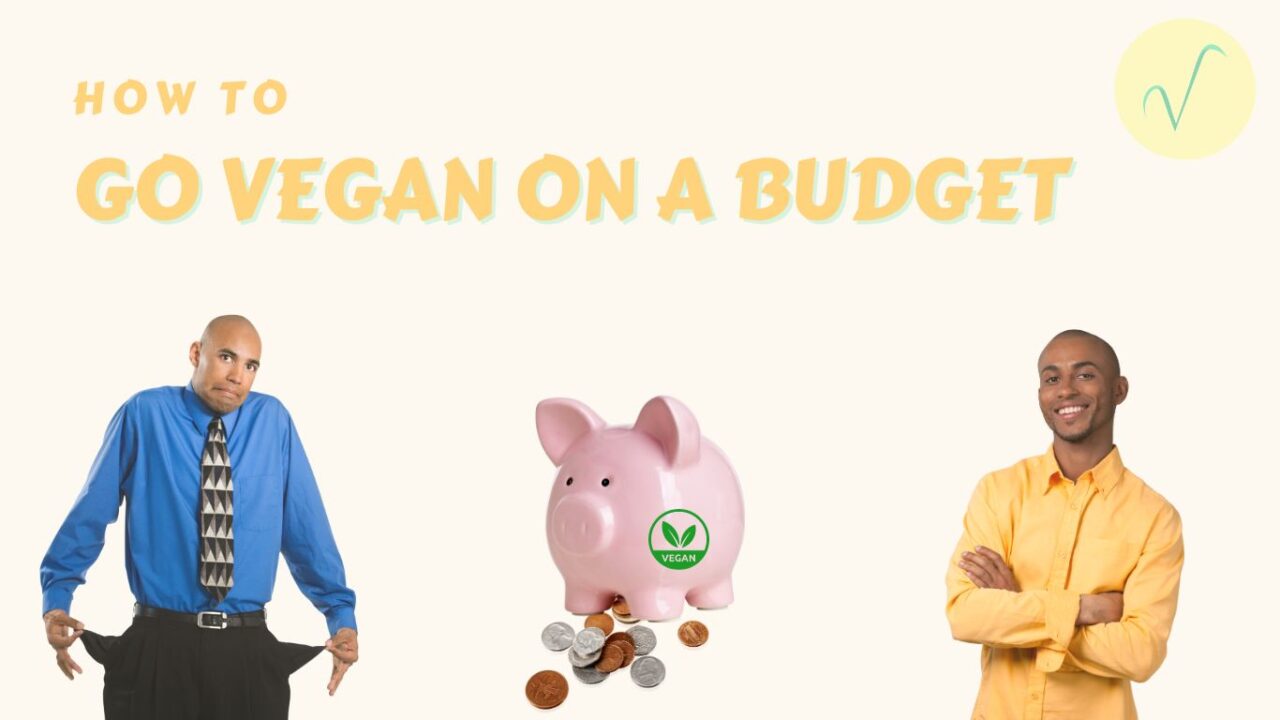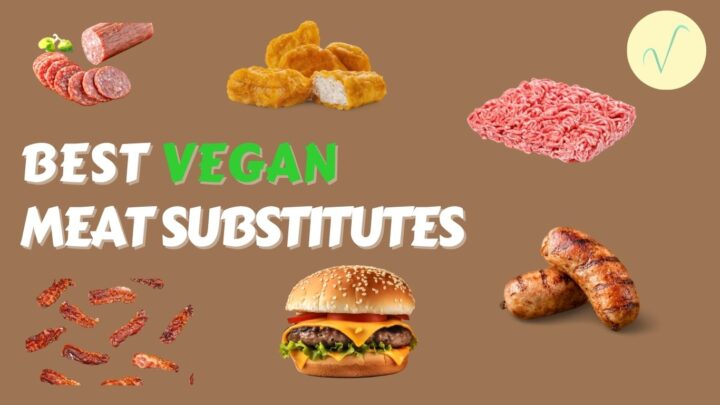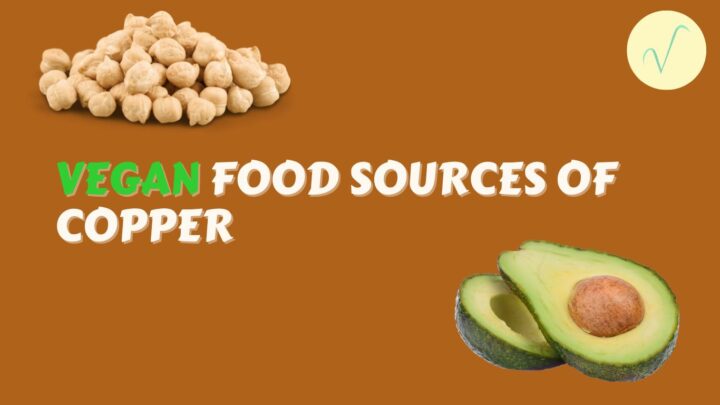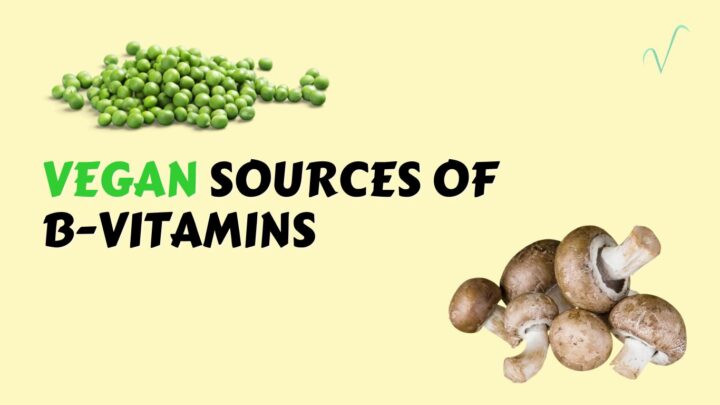Can you go vegan on a budget? You’d be surprised to know you actually can.
It’s actually a common misconception that the vegan diet is expensive, or eating vegan foods breaks the bank. It’s actually the opposite.
The first tip I can give before proceeding with the rest of the post, is to be weary of which vegan substitutes you need and which ones you don’t.
Are vegan substitutes expensive?
If you factor in the milk for your cereal, the cheese for your sandwiches and the mince for your spaghetti, it’s already quite a hefty bill. The key is to identify which ones you need and which ones you can substitute.
Check out our previous post, “is vegan food expensive”, where we mentioned how the average vegan meat substitute can cost anything from $2-5 per item.

Saving on your necessities
First you need to ensure your food groups are sorted. In terms of carbs, fat, protein, fibre and micronutrients.
In a typical omnivorous diet you tend to focus on these 5 food groups, with carbs provided by rice, bread and pasta; Fat from dairy and eggs; Protein from meat, fish, dairy and eggs and fibre from vegetables.
To veganise this you’ll need to find substitutes for each, and on a budget you need to be a bit more selective. So in our case as vegans we’d have the same food groups, but veganised.

Budget friendly carbs
Let’s cover some budget-friendly foods vegans can use when you’re penny pinching.
1. Basmati rice
Basmati rice is one of those inexpensive foods that are easy to buy in bulk, for many, many meals. Who doesn’t love some rice?
Basmati rice, or long-grain rice is one of the cheapest vegan foods available. Typically at around $1-3 for 500g-2kg. When it comes to red and brown rice, these are richer in fibre, but are slightly more costly as they pack more nutritional punch.

2. Cous cous
Cous cous is a great choice alongside some falafels or even with a vegetable medley like our veggie cous cous. Not suitable for coeliacs, as it is wheat-based.
Cooking in 5 minutes for a quick mid-week fix, priced at around $1-2 for a 500g to 1kg pack, it’s a bargain for your buck.

3. Pasta
Pasta is a budget go-to for both vegans and non-vegans alike. When going vegan I learned to use lentils as a base for bolognese, getting used to reading past packs to ensure there’s no egg snuck into the ingredients.
Pasta is one of the cheapest food products in your weekly shop, typically only costing about $1-2 a pack. That’s including spaghetti, fusilli, penne and other varieties if you’re not fussy about the type of wheat.

4. Bread and wraps
You may not have known it, but bread is typically an accidentally vegan staple food. So are wraps. Which works well for you as a new vegan as the best way to incorporate new veggies in your diet, can be wrapped up with fresh ingredients.
Wraps can be really cheap, and if we’re talking tight budget, you can typically expect to spend $1-2 per pack, ranging from 6-12 packs, depending on your preference.

Budget friendly fats
The change in fat content you eat when transitioning to a vegan diet is quite drastic. Considering veggies and rice has a lot less fat that steak and rice, it’s important you make the difference.
Good thing is plant-based fat is free of cholesterol and far less harmful than animal fat.
1. Peanuts and peanut butter
Peanuts are a great budget-friendly snack to get in some extra fat, as well as protein. Peanut butter is also an accidentally vegan snack for those you love a pb and j sandwich.
Typically costing around $1-2 for a pack of salty nuts, or jar of pb, you get a good amount of nutrition from this budget friendly legume.

2. Olives
Once I hit adulthood and noticed how expensive avocados are, I really deeped how hard adult life is. Good thing is, there’s a cheaper alternative to avocados in your salad.
Olives, both black, green and even kalamata, are a great option to consider when thinking of vegan fat sources to regularly include in your diet. At around $1-2 per jar, they last ages, and are typically seedless.
Just be sure they’re actually vegan, although seeming obvious, some foods may sneak in non-vegan ingredients, like anchovies for example.

3. Hummus, sesame seeds or tahini
There’s something about the sesame seed that’s just, special. Hummus has been my life saving dip that I use to layer wraps, dollop on the side of rice and dip veggies in. Not only rich in healthy fat but also, protein, as well as iron and calcium from the tahini.
As you’ll be eating more salads, a tahini dressing might be a great choice for you. With hummus costing about $2, sesame seeds and tahini costing about the same, it’s a great choice for the budget-friendly newbie vegans.

Vegan budget friendly protein sources
Where do vegans get their protein from? Lots of things, really. Protein is technically in everything, think about what you eat in a typical day, it’s not all from meat and dairy.
1. Lentils, beans and chickpeas
It may sound like they’re all the same thing, but not every bean and lentil are alike. Lentils for example come in red split form, brown, green, black, as well as yellow.
There are black beans, black eyed peas, garden peas and chickpeas, which all have their own benefits; also being rich in protein and carbs as well as other nutrients.
Get creative in substituting your meat-based dish for a type of bean, you may like some more than others. The key is the start small and find out what you like. Regarding price range, you can pay anything from $1-$2 for a can of beans.
Pro tip: Get your beans, chickpeas or lentils dry, and soak before cooking. This will give you more servings for your money, and fresher tasting meals!

2. Firm tofu
Firm tofu is something you may take a while to get used to, but once you experiment with it, it may become a regular ingredient in your diet. It can taste anything from soft to chewy, melt in the mouth to crispy.
I personally prefer it in a wrap or fried up as a tofu scramble, but each to their own. For the budget-friendly, you’d be glad to know a block of tofu only really costs $1-2 at the supermarket.
3. Oats, oats, oats!
Oats are also rich in protein, not only carbs. A great vegan starter breakfast option, and you can typically buy oats in bulk for a reasonable price.
They can be eaten in oatmeal, as well as in burgers or homemade flapjacks. A cheaper option than conventional cereal, and budget friendly, you should expect to spend around $1-2 for a pack of your week’s oats.

Saving on your extra fruit and veggies
Although not commonly known, fruits and vegetables aren’t as expensive as you think. To ensure you get a good balance, you can opt for the cheaper fresh fruits such as bananas, oranges, and apples.
Cheaper fresh veggies include cabbage, lettuce, tomatoes and cucumber. For these fresh ingredients, they’d typically cost $1-2.

You can then be more creative in sourcing your fruit. Go for frozen mango, or berries, where they’re cheaper to buy frozen, or even getting some raisins for your oatmeal. Typically at around $2-3 a pack.
The same can be done for veggies, you can buy all sorts of frozen peas, sweetcorn and more. It’s still the same nutrients, just frozen for easy prep. Frozen veggies also range from $1-3.
Pro tip: Go to Chinese supermarkets and get large packs of dried mushrooms to soak yourself, instead of buying them fresh. They last for months, give you so much more gram for gram, and give you a bigger selection than the average mushroom in the supermarket fridge section.
You’ll typically have double the dried mushrooms gram for gram compared to the portions sold for fresh mushrooms. …And the texture is 100x better.
Is a vegan diet expensive?
If you’re overly bingeing on vegan meats and getting every substitute under the sun, you’ll be spending a lot. If you fill your weekly shopping basket while plant-based whole foods, such as grains, greens and beans, you will save, instead.
If you focus on your needs, ensuring you got all bases covered: your breakfast, lunch, dinner and in-betweens, then you can slowly try, then incorporate your substitutes for your shops.
It’s a big change to cut out cheese, milk, and cheap meats like mince or ham, from your diet. The initial experimenting with what alternatives you’d like will take time, as well as adjusting to the price difference.
You might have noticed a lot of the foods in each category crossed over into others, that was intentional. I wanted to show you guys, that even on a budget, a vegan diet can be as varied, tasty and nutritious, as a typical omnivorous diet.
Hopefully you learned a thing or two about how to go vegan on a budget. Feel free to leave a comment with any questions you may have, who knows? I might base another post on it in the future.
Thanks for stopping by, remember: it’s easier than you think, pace yourself to adjust, and most importantly, enjoy experimenting with new foods.




